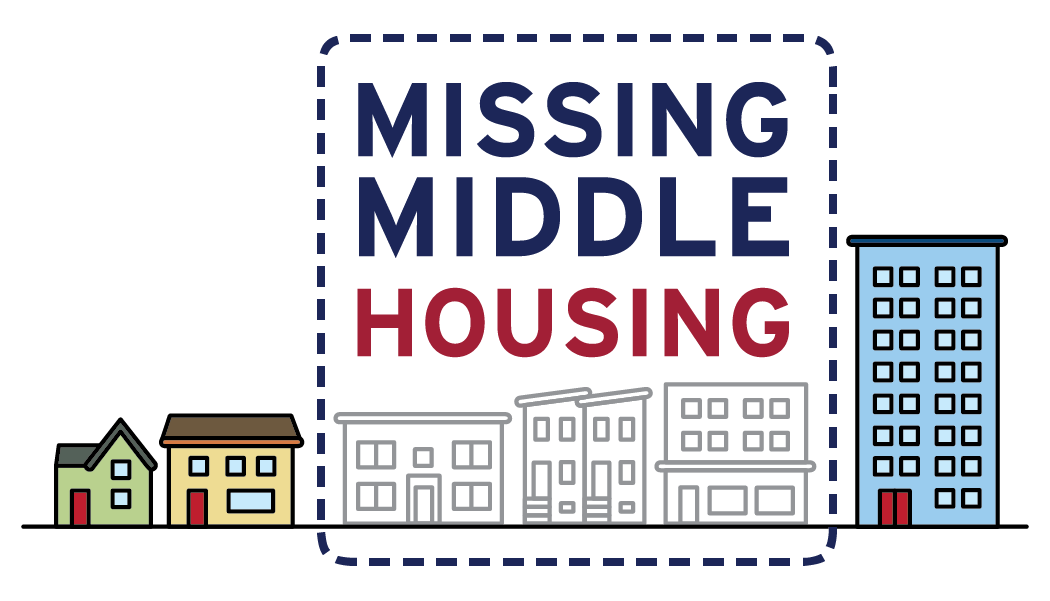Missing Middle Housing Initiatives across the US
Arlington is not alone in its exploration of Missing Middle Housing. As housing prices rise in cities across the country, municipalities from all corners of the nation are working to implement innovative housing solutions.
East
Greenville Missing Middle Housing Analysis – Opticos Design conducted a Missing Middle Scan and Deep Dive analysis for this small South Carolina city in 2019. The City’s recently released Housing Strategic Plan includes several follow-up recommendations to implement.
Cambridge, MA – 100% affordable housing overlay zone – Adopted October 5, 2020, this new policy allows developers to build using a relaxed set of rules only if they create 100% affordable units on the site. This is expected to help affordable housing developers compete for sites with market rate buyers who usually outbid them.
St. Petersburg, Florida – Skinny Houses – In 2019, the St. Petersburg City Council unanimously approved a new “Neighborhood Traditional Mixed Residential” zoning category to help create missing middle housing including duplexes to fourplexes and skinny houses. The maximum density is 30 units per acre and maximum of four units and 36 feet high. The zoning category was created prior to selecting which specific neighborhoods it would apply to, which are being determined via a separate process. Eligible areas include those adjacent to a public alley, fronting to a “future major street” and outside of the city’s flood-prone area.
Midwest
Minneapolis Built Form Rezoning Study – This rezoning study is the next implementation step following the passage of Minneapolis 2040 as the new comprehensive plan, which went into effect January 2020. The City Council will be considering approval of new built form regulations in mid-December 2020 (stay tuned for an update).
Minneapolis Site Plan Review – Residential Point System – The Minneapolis residential site plan review process for 1-3 unit homes creates incentives for priority actions relating to trees, stormwater, and certain design characteristics. A minimum of 17 points (out of 27 maximum) is required for all new residential construction.
Cincinnati, Ohio Form-Based Code for Walkable Neighborhoods – Similar to other form-based codes, Cincinnati uses the concept of the Transect to create new zoning code with attention to building scales. The code provides allowable parameters such as height, open space and pedestrian access.
West
Portland, Oregon – Residential Infill Project – Approved by the city in August of 2020, the new policy legalizes up to four homes on most lots and reduces maximum building sizes from 6,500 sq. ft. to 2,500 sq. ft. Up to six-unit homes are allowed if half are designated “affordable.” For three or four units, at least one unit must be “visitable.” Parking requirements were modified/eliminated. The provisions also include new rules geared to improving building designs such as limiting how high a front door can be above the ground and limiting garages on narrow facades. Following the RIP approval, the city started work on an Anti-Displacement Action Plan to help minimize harm to vulnerable communities as a result of the city’s growth, development, and public investments.
Bend, Oregon – Collaborative Housing Working Group – A collaborative working group worked with consultant ECONorthwest to develop a set of twelve recommendations to encourage missing middle housing. Recommendations include allowing parking districts as an incentive and calculating density across a larger area rather than lot-by-lot.
Mountainview California – R3 Zoning Revisions - The city is updating the R3 (Multifamily Residential) zoning district development standards to consider incorporating form-based zoning standards, incentivizing stacked-flat development, and updating the City's Rowhouse Guidelines.
Richmond, CA – Richmond Livable Corridors Form Based Code – The City of Richmond created a single form-based code for three major commercial corridors in the city. As with other form-based codes, the code contains standards for a variety of types of missing middle housing from duplex to multiplex, live/work stacked flats, etc.
Washington State – Following passage of a state law encouraging localities to allow additional housing options, at least 19 communities in Washington State are working on new zoning for missing middle housing.
City of Coeur d’Alene, Idaho – The city began considering zoning changes referred to as “Coeur Housing” to allow missing middle infill housing in 2019 and has held numerous community workshops, with expected adoption in April 2021. The city also has addressed cluster housing and pocket housing in prior code updates.
Salt Lake City, Utah – The city very recently began the process of considering zoning reforms for missing middle housing.

